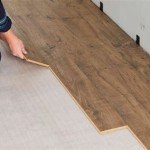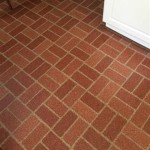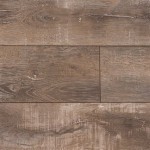Does Laminate Flooring Move When You Walk On It?
Laminate flooring has become a popular choice for homeowners due to its durability, affordability, and ease of installation. However, one common concern among potential buyers is whether laminate flooring moves when you walk on it. The answer to this question depends on several factors, including the quality of the flooring, the type of underlayment used, and the installation process.
### Factors Affecting Movement1. Flooring Quality:
Laminate flooring planks come in various grades, with higher-grade planks being more stable and less likely to move. Low-grade planks may be thinner and more susceptible to movement under stress.2. Underlayment:
The underlayment layer installed beneath the laminate flooring plays a crucial role in reducing movement. A high-quality underlayment helps absorb shock and provide a stable base for the flooring.3. Installation:
Improper installation can contribute to flooring movement. Ensure that the planks are properly locked together and that the expansion gaps are maintained around the perimeter of the room. ### Reasons for MovementEven under optimal conditions, some minor movement may still occur in laminate flooring. Here are some possible reasons:
1. Temperature and Humidity Changes:
Laminate flooring expands and contracts in response to changes in temperature and humidity. Extreme temperature fluctuations or high humidity levels can cause the planks to buckle or move.2. Heavy Loads:
Walking on laminate flooring with heavy objects or furniture can put stress on the planks and cause them to shift slightly.3. Moisture Penetration:
If moisture penetrates through the laminate flooring, it can cause the planks to swell and move. This is especially important in areas with spills or leaks. ### Minimizing MovementTo minimize movement in laminate flooring, follow these tips:
1. Choose High-Quality Flooring:
Invest in higher-grade laminate flooring that is more stable and less likely to move.2. Use a Quality Underlayment:
Install a high-density underlayment to absorb shock and provide a stable base for the flooring.3. Maintain Proper Expansion Gaps:
Ensure that expansion gaps are maintained around the perimeter of the room to allow for expansion and contraction.4. Control Temperature and Humidity:
Use a dehumidifier in damp environments and consider air conditioning to regulate temperature.5. Protect Against Moisture:
Clean spills immediately and avoid using harsh chemicals. Consider a moisture barrier underlayment in moisture-prone areas. ### ConclusionWhile laminate flooring may experience some minor movement, it can be minimized by choosing high-quality materials, installing it properly, and maintaining it well. By following these tips, you can enjoy the durability and beauty of laminate flooring for many years to come.

Laminate Flooring Faqs Bouncy Floors Lifting Maintenance And More

Laminate Floor Installation Tips

Ask The Builder Blame Installation For Laminate Flooring S Problems

Vinyl Vs Laminate Flooring Pros Cons And Differences Forbes Home

Laminate Flooring Faqs Bouncy Floors Lifting Maintenance And More

What Is A Floating Floor Pros And Cons Esb Flooring

Common Mistakes To Avoid When Installing Laminate Floors

Common Mistakes When Laying Laminate Leader Floors Blog

Flooring Fixing Methods Floating Floors Direct Wood Blog

Laminate Vs Hardwood Flooring Major Differences Forbes Home
Related Posts








